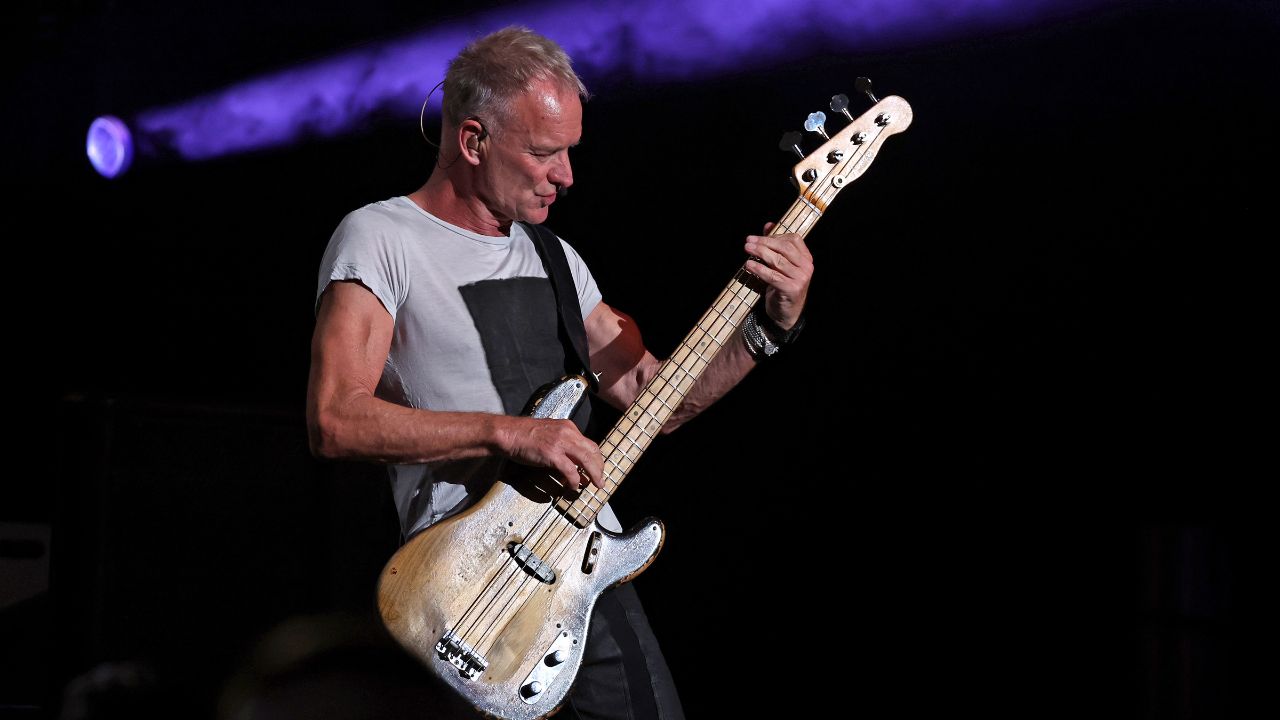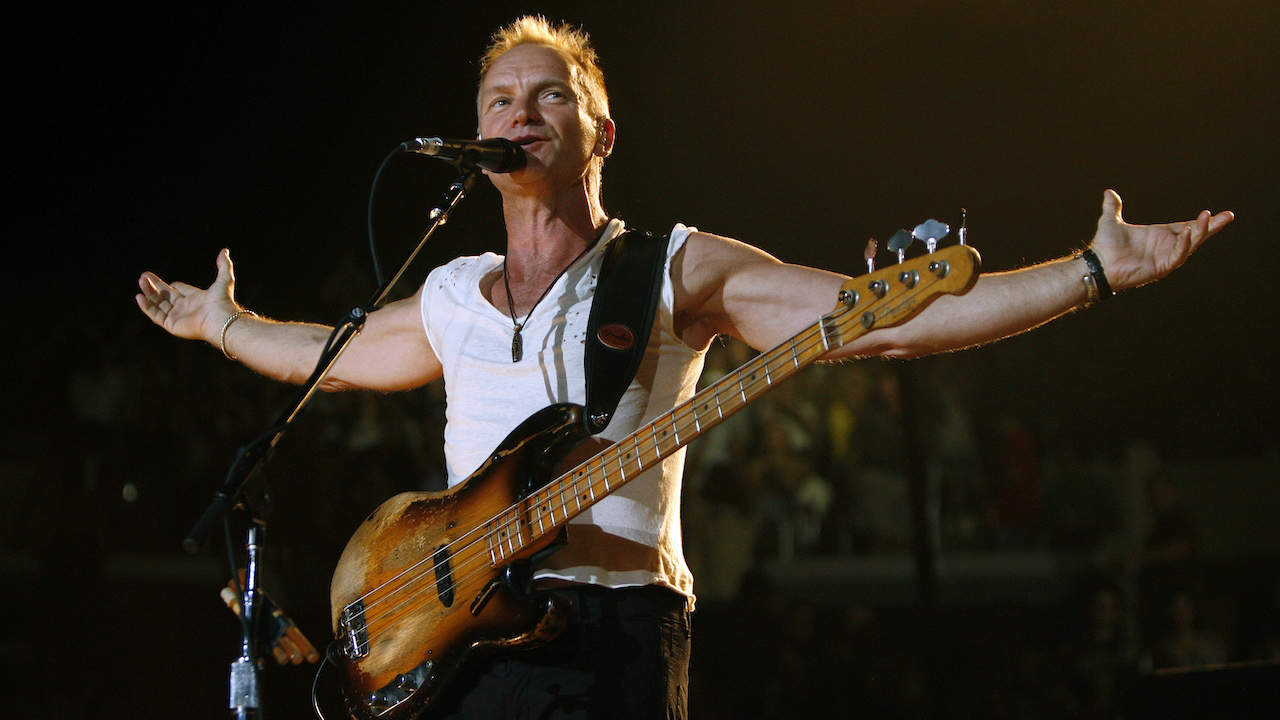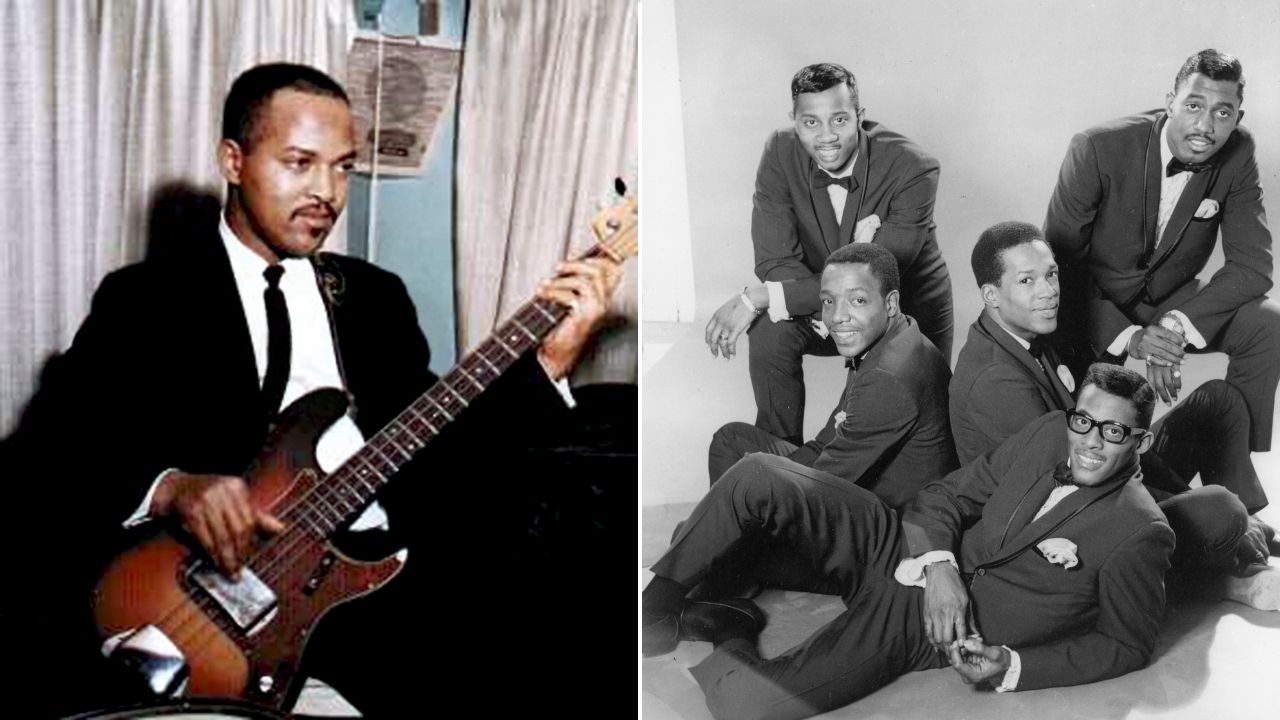“I hate new basses. I think they are terrible. I don’t want to have one in my hands”: How Sting’s 1953 P-Bass set the tone for this Police classic
Taken from the fourth Police album, Ghost in the Machine, Sting's fretwork is filled with chord inversions, syncopations, and dynamics – all the right stuff for a dynamite bassline

While Sting may be famous for incorporating a variety of different styles, musicians, and instruments in his music, there is one respect in which he's a true conservative: he'll never replace his beloved old Fender bass guitar.
“I use a 1953 P-bass, and it looks like an orphan,” Sting told the October 2018 issue of Bass Player. “It's all battered and beaten up.
“I love old basses, particularly the ones that have scratches on them. You can see where people have played them before. But I hate new basses. I can't stand them. I think they are terrible. I don’t want to have one in my hands.”
Although Sting has never been considered a bass hero, his basslines reveal that he has many of the qualities of a truly great player: he's melodic, inventive, rhythmically interesting, and he can make a tune develop as it progresses.
A great example is on Every Little Thing She Does Is Magic, from the fourth Police album, Ghost in the Machine. Sting's bass part is filled with chord inversions, syncopations, and dynamics – all the right stuff for a dynamite bassline.
The chord progression (as defined by the piano) jumps between G and A, but Sting makes things interesting by playing the 3rds of the chords every other measure.
The result is a linear, melodic climb, suggesting that the introduction is leading to something more important. Simply playing the roots might have made the intro boring – definitely a no-no.
All the latest guitar news, interviews, lessons, reviews, deals and more, direct to your inbox!
As the tune kicks into double time and gears up for the chorus, Sting’s bassline responds by getting busier, ending with a slow slide from D at 00:35.
Sting often comes up with parts that are remarkably unexpected and inventive; the chorus is a perfect example. He plays on beat one of each measure, but not on beats two and three, opting instead for a quarter-rest and a 16th-rest, respectively, which gives the section space and movement.
The end of the second chorus recalls the introductory motif, but with a twist. Instead of G and A, the chords are Bb and C; Sting plays F under the C chords (the 4th), lending a suspended, tense feeling to the music.

In the bridge, Sting plays the roots of the chords, but the harmonic movement is a little unconventional. At 01:47, the song gathers momentum, and Sting follows by pedalling eighth-notes.
The bridge ends much as the second verse did, alerting the listener that the third chorus is coming.
The third time around, the chorus offers some variation: it's twice as long, and Sting plays on beat three at 02:06 and throws in some B – E moves. Tense slides that anticipate beat one and beat three by 16th-notes alternate with busier double-time sections; the result is an amalgamation of tension and happy relief.
This continues as Sting ad-libs the vocals; he also spices up the bassline with root-5th-octave figures. This section ends with a tension-building climb at 03:36; when Sting settles back on D at 03:45, the result is a strong feeling of relief.
In the last section, Sting repeats a root-5th figure. For variation, he alternates Latin-flavored measures (with notes tied across the beats) and measures with the downbeats played. He then juices up the figure with quick hammer-ons.
As the song fades, he returns to the introductory motif, which seems to climb into oblivion. This ties the tune back to the beginning – a nice final brushstroke by one of the unsung masters of the bass.
Karl Coryat was Deputy Editor of Bass Player magazine in the 1990s. In the 2000s, he wrote two music books: Guerrilla Home Recording and The Frustrated Songwriter’s Handbook, the latter with Nicholas Dobson. In 1996, he was a two-day champion on the television game show Jeopardy!. He works as a comedian and musician under the pseudonyms Edward (or Eddie) Current.
You must confirm your public display name before commenting
Please logout and then login again, you will then be prompted to enter your display name.

